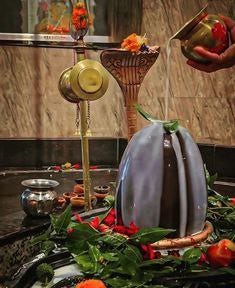The month of Shravan or Sawan is one of the most sacred periods in the Hindu lunar calendar. Falling typically between July and August, Shravan marks the fifth month in the Hindu calendar and is associated with intense devotion, fasting and a variety of religious rituals, particularly in honour of Lord Shiva. The month derives its name from the Shravana Nakshatra (constellation), which is prominent on the full moon day (Purnima) of this month. It is also known as the Ramayana Maas since during this month many people like to read the whole of the Ramayana. In olden days bards used to go from village to village and read the Ramayana to the villagers who would collect in the village square to listen. This was how our culture was kept alive.
The Shravan month is filled with auspicious festivals and events. It is the best time to conduct important religious ceremonies, as almost all days in this month are auspicious for a good starting point shubh arambh.
Every Monday or Somvar of this month, is celebrated as Shravan Somvar across Bharat with the Dharanatra (Copper pot carrying water which drips over the lingam) dripping water throughout the day and night. Devotees offer bael leaves, white flowers, Ganga water and milk to lord Shiva on every Shravan Somwar. They fast until the sun goes down and break their fast with some food that has been offered to Shiva. The Akhanda Deepam (lamp), burns throughout the night.
Why is Shiva the main deity during this period?
The Samudra Manthan is a very important event which is mentioned in most of our Puranas. The churning of the milky ocean or Samudra Manthan took place in the month of Shravan. It was done in order to get the “Amrit” or elixir of life which would give back their lost youth to the devas. The asuras had agreed to help them if they shared everything with them. During the churning, many amazing things emerged from the ocean. These were equally divided among the devas and the asuras. What emerged at one point was the dreaded Halahala poison which was a deadly poison that could destroy the whole universe had it dropped on our planet. Lord Shiva, was the saviour of the world and he drank the Halahala and stored the poison in his throat which turned blue. Hence he got the name “Neelakanta” or the “blue-necked” one. None of those who were present on the banks of the milky ocean slept that night and all of them started pouring Ganga water over Shiva’s locks in order to reduce the effects of the poison. Since this happened in the month of Shravan, people continue the tradition by pouring Ganga water and milk over the lingam during this month especially on Mondays since Shiva is the ruling deity of this day. “Abhishekam” with milk, honey and Ganga jal are specially done on all the Mondays of this month and are known as “shravan somvar”. Vibhuti (sacred ash) is also very important in Shiva pujas. Abhishekam is also done with panchamrit (a mixture of milk, curd, ghee, honey and jaggery). Bael leaves are very special for puja and after the abhishekam, these leaves are placed on the lingam with the chanting of the panchakshari mantra (aum namashivaya). Wearing a rudraksha mala and using it to chant the panchakshari and mahamrityunjaya mantras are very good in this month. Arati should be done after the puja.
It was the custom in olden days for young girls to fast on all Shravan Somavars to get Shiva’s blessings for a good husband.
In North India, especially the states of Uttar Pradesh, Bihar and Madhya Pradesh, devotees known as Kanwariyas or Karwadis undertake a pilgrimage and fetch holy water from the Ganga in Rishikesh and Haridwar and offer it at the Shiva temples in their own town or village. Dressed in saffron attire, these Kanwariyas carry what is known as (karvads) and walk barefoot for miles, displaying intense physical and spiritual devotion. The karwads look like dressed up bows and have a pot of Ganga jal on either end of the bow which is used to do abhishekam to their own lingams.
From a seasonal standpoint, Shravan marks the monsoon season in most parts of India. The earth, nourished by rain, bursts into life, symbolising renewal, fertility, and growth—both agriculturally and spiritually. In Ayurveda, this is also seen as a time when the body is more receptive to detoxification and spiritual practices. Hence, the tradition of fasting, consuming light food and focusing on prayer and introspection gains deeper meaning. Kerala Ayurvedic spas, encourage people to go for pancha karma treatment in this month.
Symbolically, Shravan is considered as a month of sacrifice, discipline and purification. Abstaining from meat, alcohol and even certain vegetables like onions and garlic is common. People are encouraged to reduce worldly desires and channel their energy toward prayer, meditation and service.
Thus the month of Shravan offers a holistic experience of devotion, introspection, and renewal. As the rains cleanse the earth, so too does the human being become rejuvenated through the prayers and practices of this sacred month.
The Adiveda society is conducting a series of talks and practices for the month of Shravan. The link is given below.
Shravan Shiv Sadhana
The Most Awaited Sadhana Program is here
A 30-day guided experience rooted in Shiv Tattva, designed to help you stay consistent, connected, and aligned
What Awaits You:
Weekly Live Sunday
Somvar Vrat Guidance
Shiv Stotram Sadhana
Sacred Rituals & Worship
Hatha Yog Kriya
Program Details:
Begins 11th July
Register Now: https://tinyurl.com/t6jkvssx
Aum Namashivaya!



